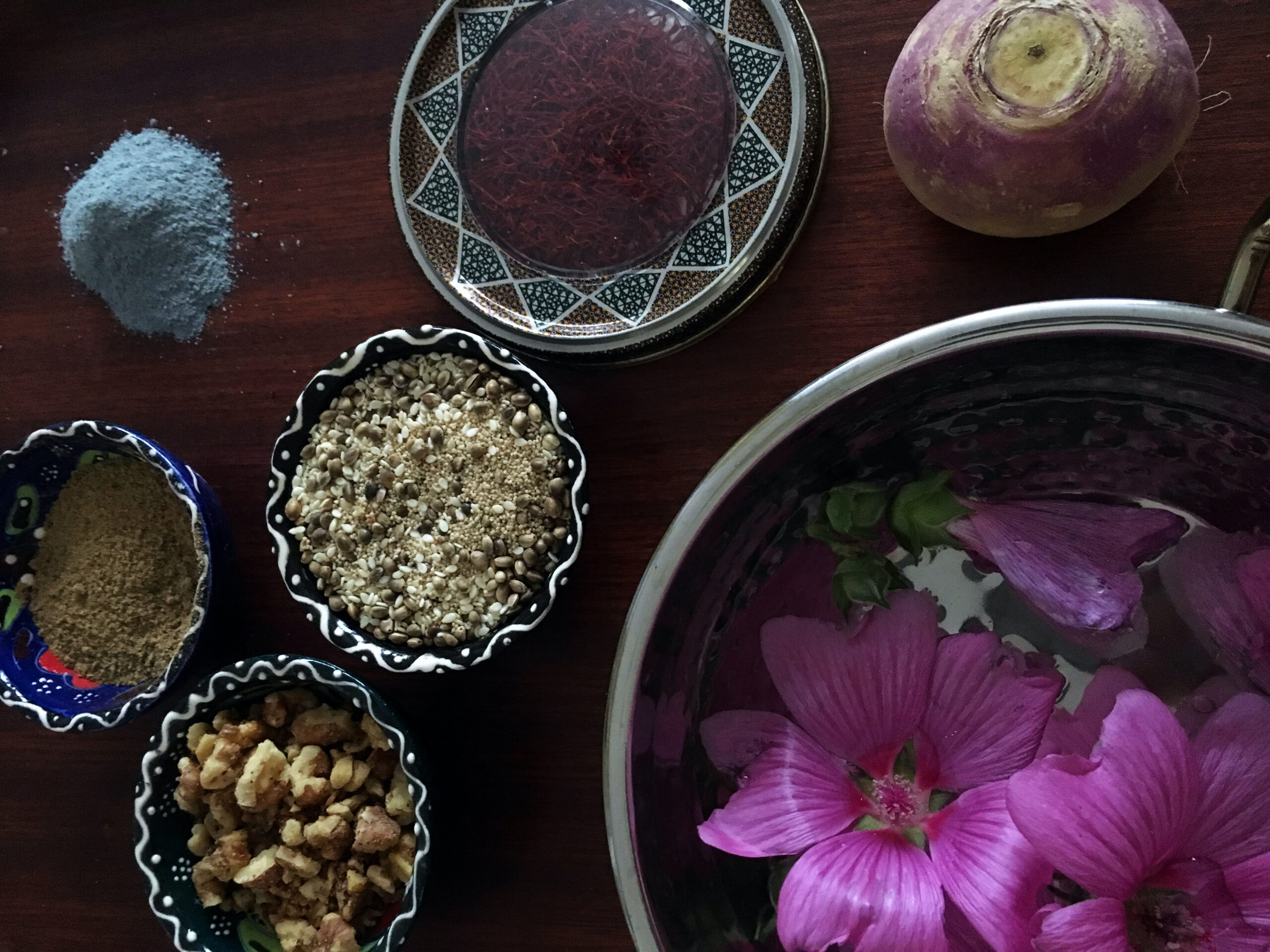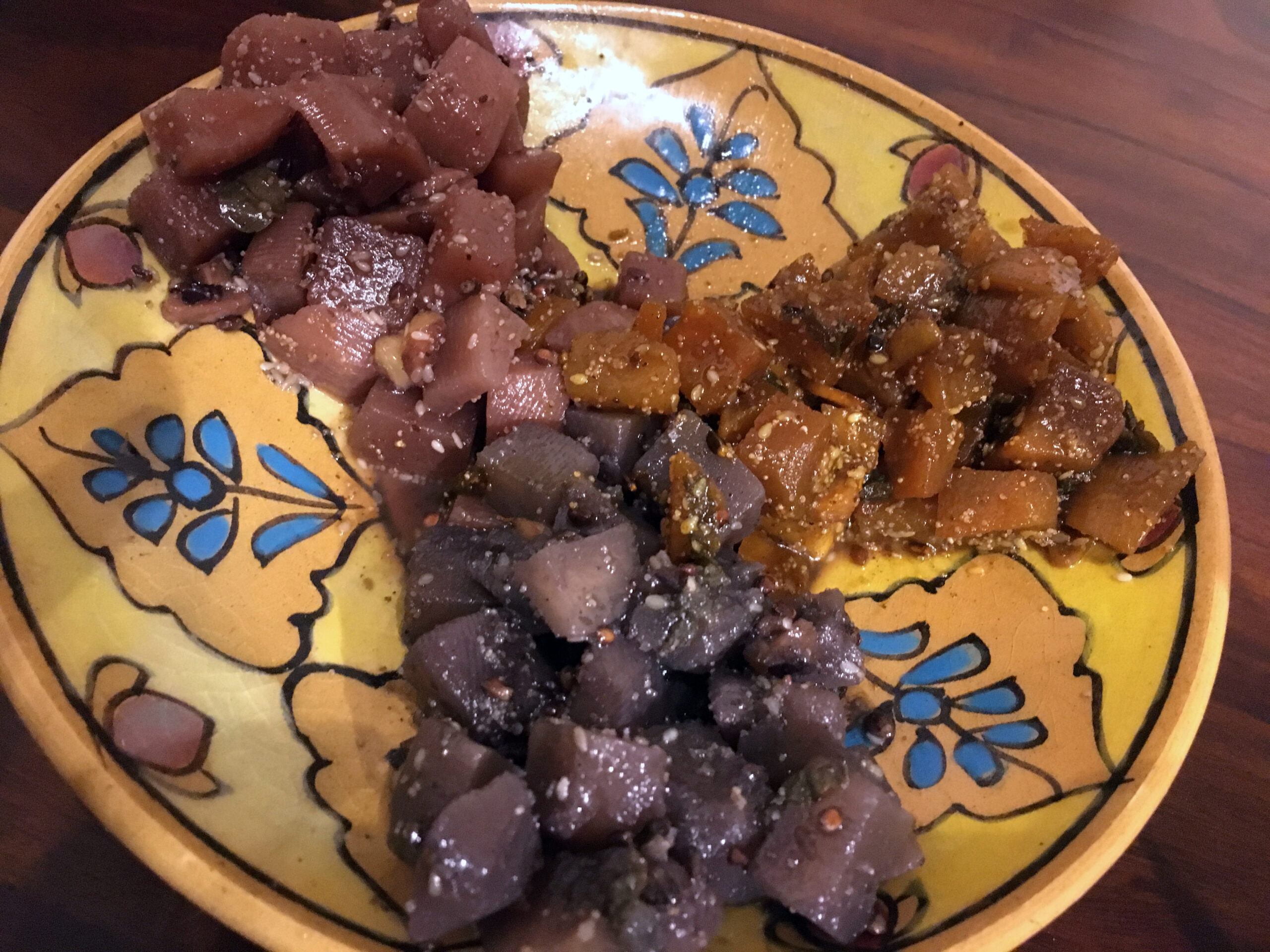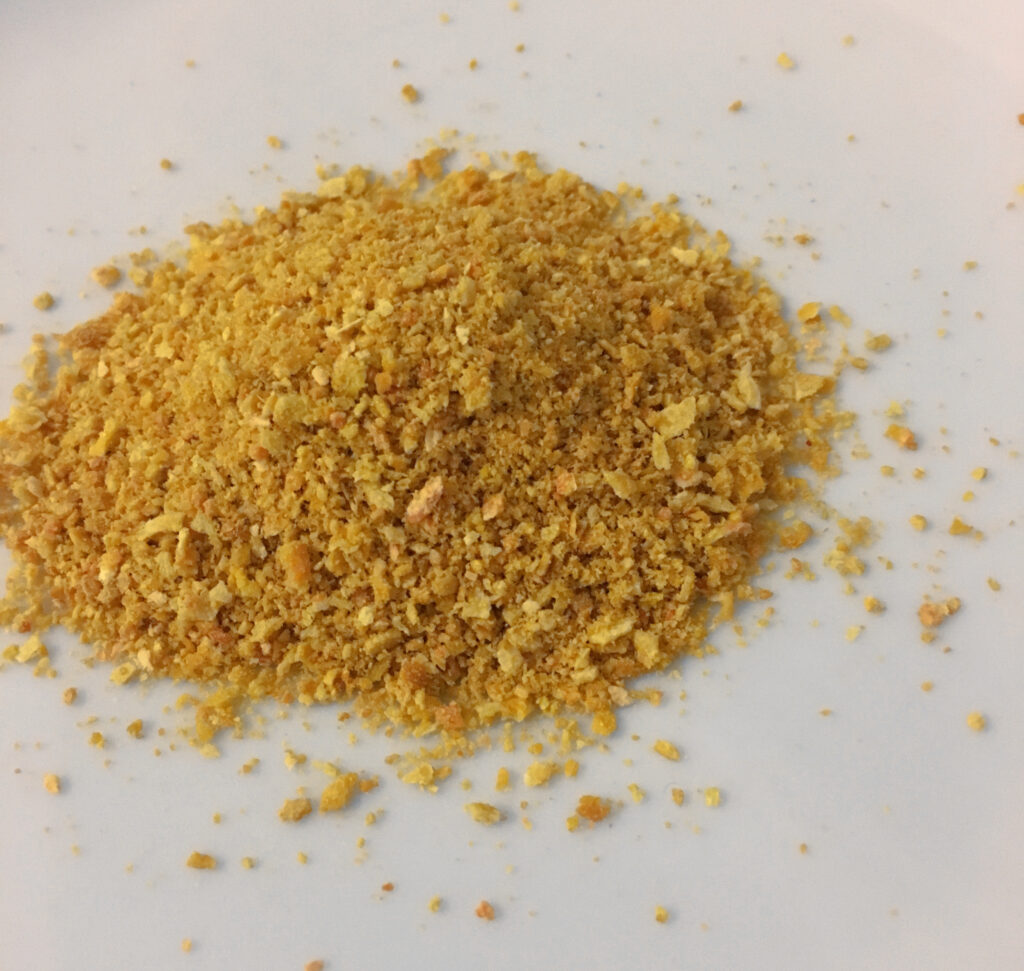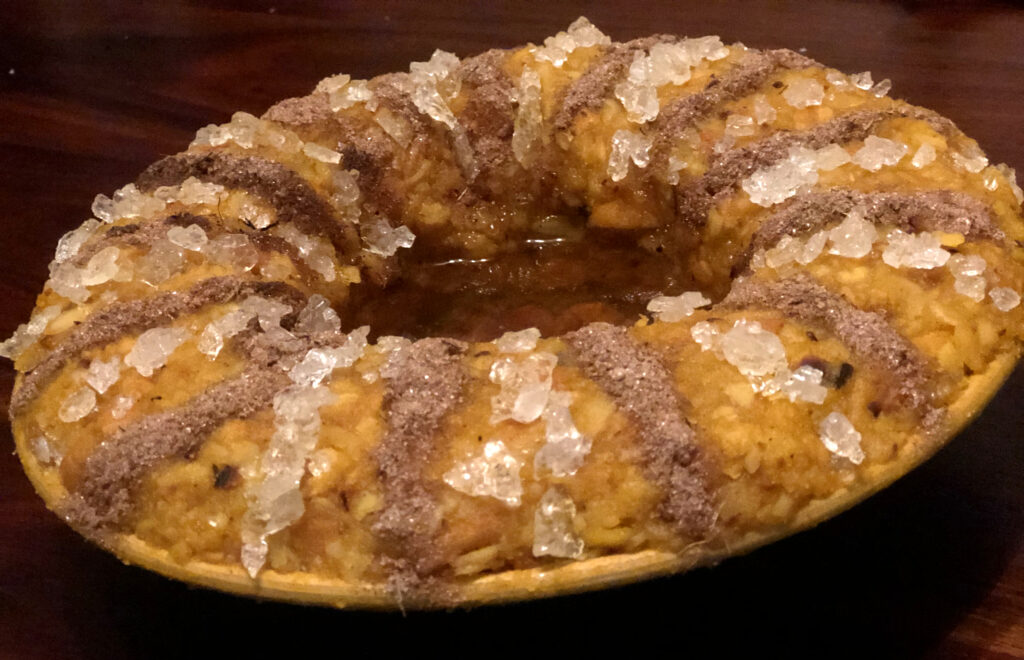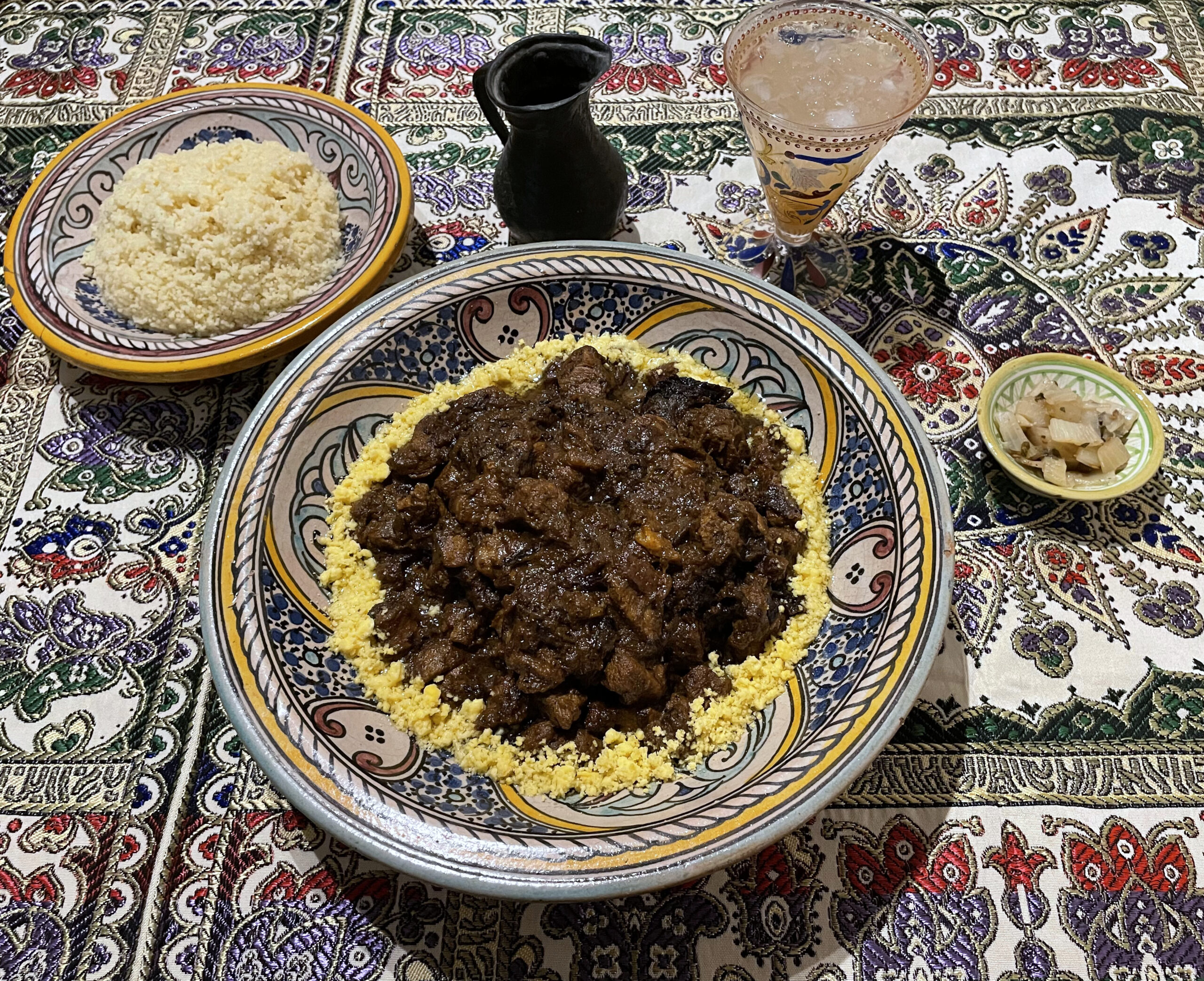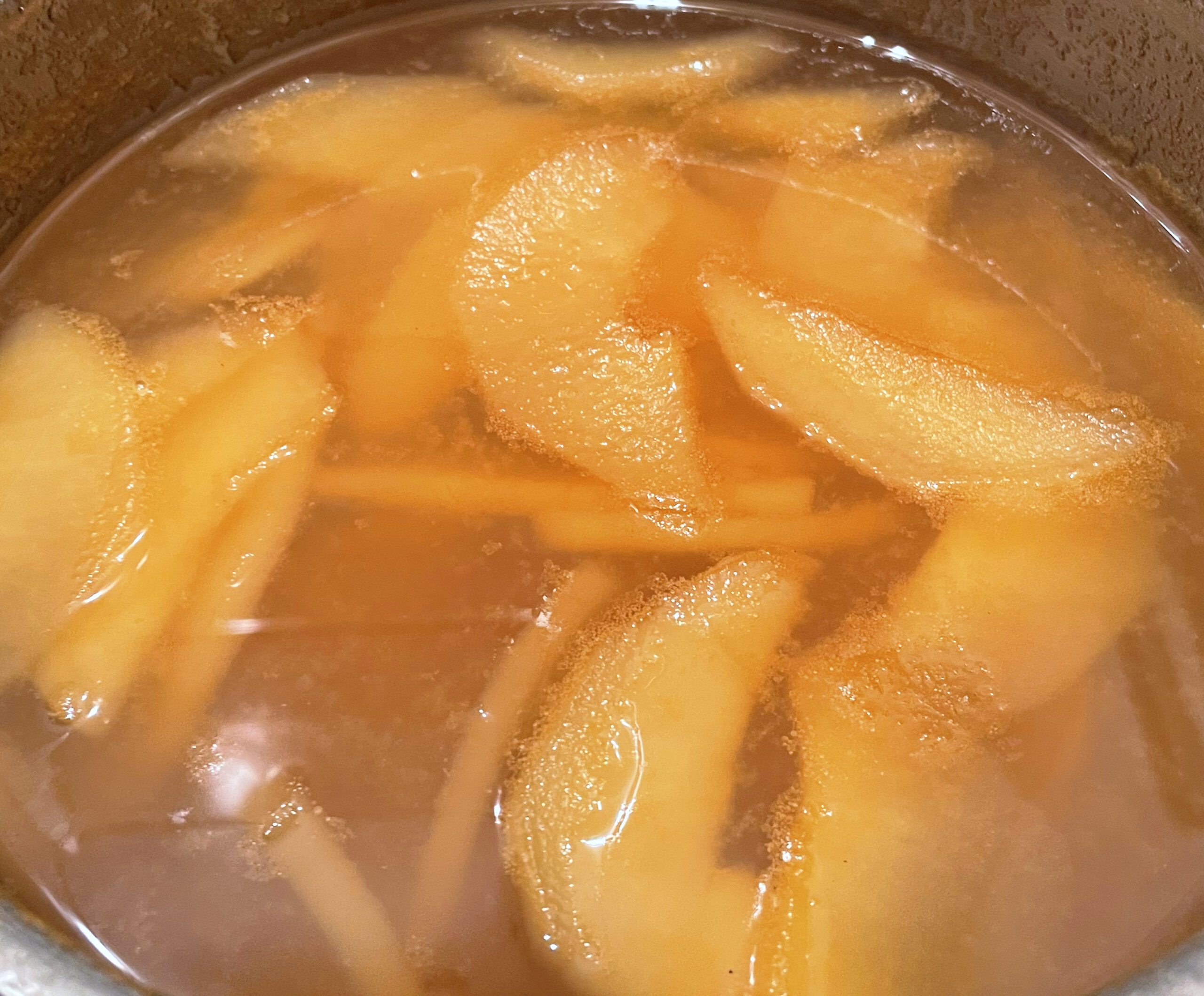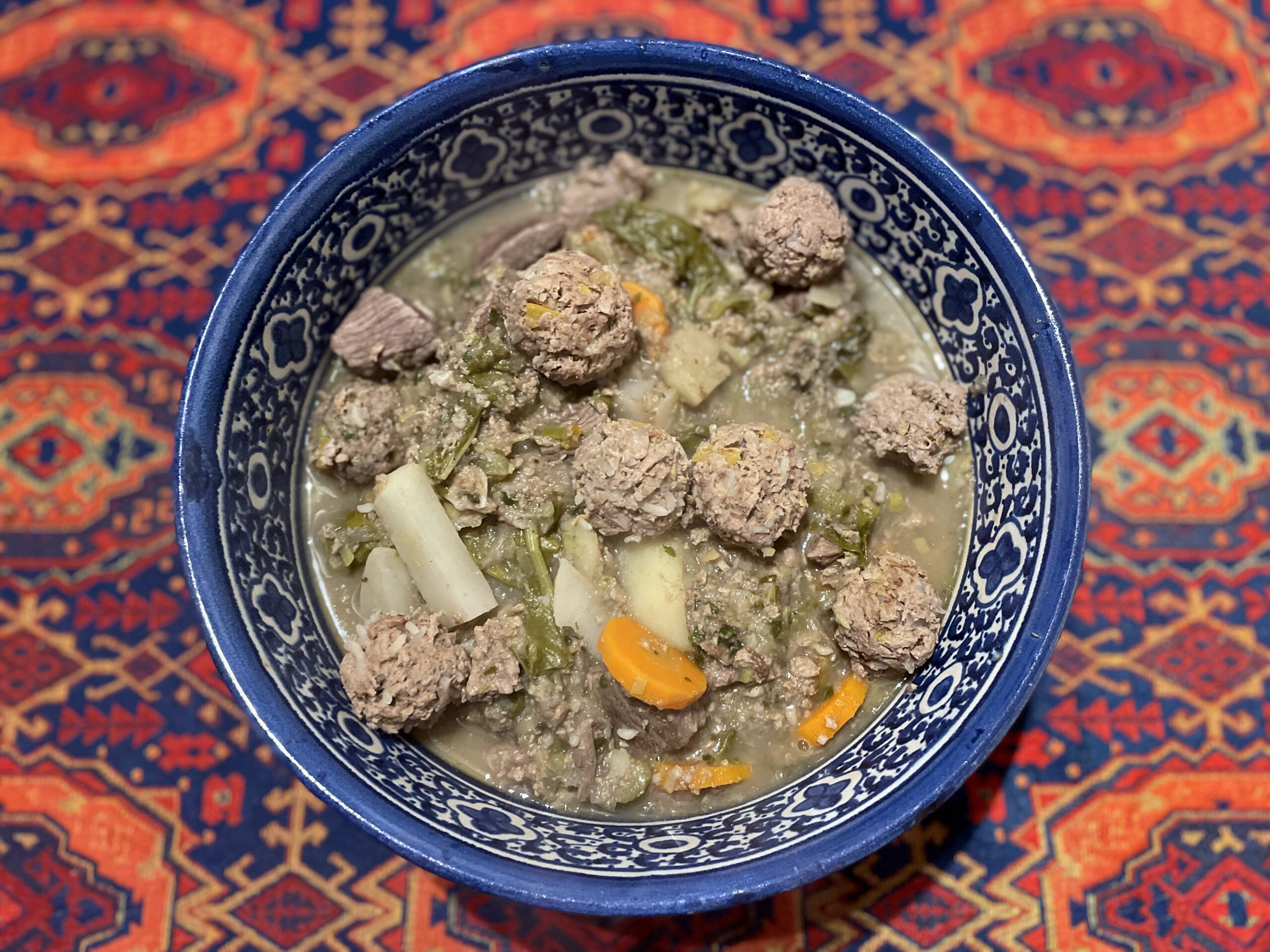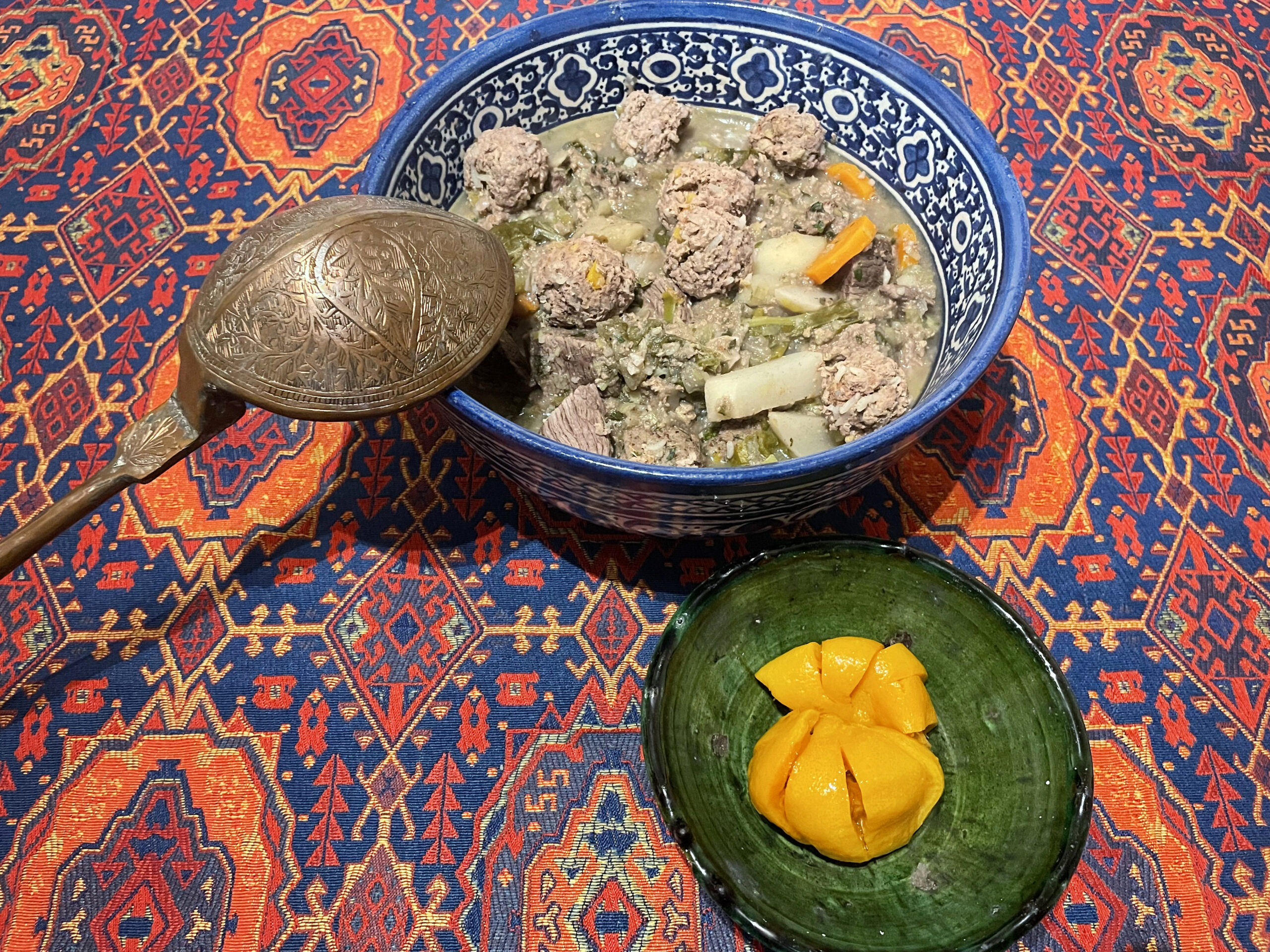This dish was clearly very popular since similar recipes can be found in a number of cookery books, one from 13th-century Syria and two from Egypt (14th and 15th centuries). It is made with pomegranate seeds, wine vinegar, and honey (or sugar). Flavours are enhanced by adding, among other things, mint, rue, aṭrāf al-ṭīb, pepper, ginger, poppy seeds, toasted walnut pieces, and garlic at various stages. For those who wish to heighten the visual effect, one of the recipes recommends colouring the pickles with saffron (yellow), indigo (blue), or rose mallow (red).
